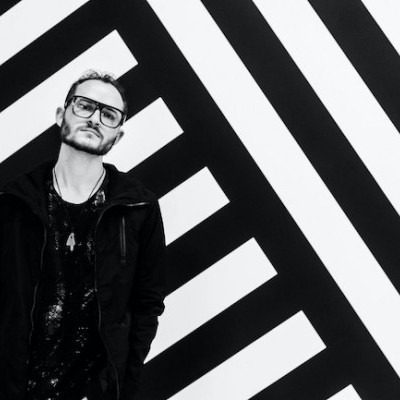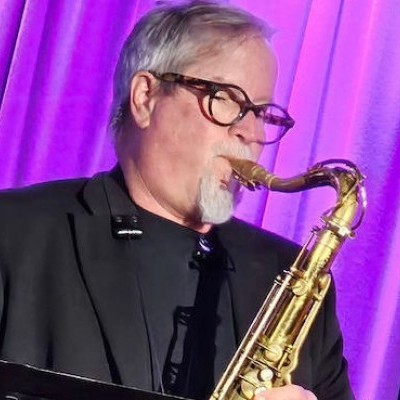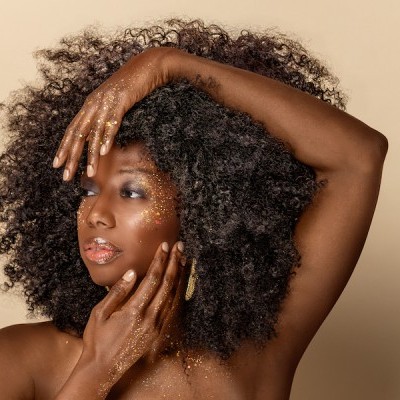Oct 28, 2025 10:47 AM
In Memoriam: Jack DeJohnette, 1942–2025
Jack DeJohnette, a bold and resourceful drummer and NEA Jazz Master who forged a unique vocabulary on the kit over his…

Koma Saxo performs a Dec. 5 set at G Livelab during the We Jazz Festival in Helsinki.
(Photo: Maarit Kytöharju)Unlike many festivals, Helsinki’s venturesome We Jazz Festival, which ran Dec. 1-8, is an inherently restless endeavor. Still young and evolving, the event—now in its seventh year and helmed by founder/director Matti Nives, who also heads up the We Jazz label—adhered to its policy of moving operations to different venues each night. And sometimes gig to gig.
Helsinki and its fruitful jazz scene largely are the focus of the fest, and the city’s a compact, walkable enough place to allow for the fest-in-motion plan. By the We Jazz festival’s conclusion this year, performances had landed at Ääniwalli (a onetime factory turned club), Sävy, Kaiku, the Helsinki Contemporary gallery and a few secret venues (a photographer’s studio and printmaker’s studio/gallery space). During its run, the event has established itself as a galvanizing presence in a jazz-strong city previously lacking a jazz festival anchor (apart from the nearby April Jazz in Espoo). But this year’s eight-day We Jazz event also included side trips for festgoers to the new G Livelab club in Tampere (a spin-off of the Helsinki club) and a two-hour ferry trip to Tallin, Estonia.
Last year, one of the memorable, offbeat venues was a jumbo-sized storage locker that hosted a solo set by rangy Finnish saxophonist Mikko Innanen, as well as a duo featuring saxophonist Otis Sandsjö, both horn players also appearing with then-new Koma Saxo. This year, Koma Saxo, with its unique three-sax front line (Jonas Kullhammar rounds out the reeds) and the acknowledged powerhouse bass-drum team of Petter Eldh and Christian Lillinger, has a new record out on the We Jazz label, and is fast becoming a sensation. The group’s wild, deeply musical set on Dec. 5 at G Livelab in Helsinki qualified as the best of this fest and asserted promise as one of this year’s most striking projects on the European jazz scene.
“The basis of this band was to have me and Christian as a rhythm section and to deal with something we had a problem with—saxophones,” Eldh wryly explained onstage. “It’s a therapeutic project for us.”
“How’s that going?” Sandsjö asked, joking.
“Pretty good,” Eldh responded.
At this still-formative stage, the band is more than just pretty good, delivering a potent but flexible ensemble sound, with deposits of humor and triple saxophonic sonics, anchored and pumped up by the Eldh/Lillinger rhythm team.
On Dec. 6, Finland’s independence day, We Jazz took to the Baltic Sea, heading to Tallinn on the MS Finlandia, with the lean Bowman Trio performing aboard. Things get woozy in the middle of the Baltic, making full appreciation of the music difficult, but the trio, a malleable mainstream unit featuring limber trumpeter Tomi Nikku in taut cahoots with drummer-composer Sami Nummela and bassist Joonas Tuuri, was fully in its element that night at Tallinn’s Sveta Baar. In this packed setting ashore, the trio played along with a post-Coltrane/modal hard-bop quartet led by saxophonist Muriel Grossman.
That night’s main event, set in the lavish quarters of the Valkoinen Sali ballroom, proved to be another festival peak. British pianist Elliot Galvin went impressively and intuitively off-book: There was no score for his hour-long set of freely-improvised pieces. Working all over the keyboard, inside the piano harp with prepared touches, and even adding snatches of African thumb piano, Galvin brilliantly drew on his virtuosic technique, and steady gush of creative notions and structures-on-the-fly, only fleetingly echoing Keith Jarrett.
After an intermission came Maria Faust, the respected Estonian saxophonist now living in Copenhagen. She is a returning force to We Jazz after a 2017 solo set and, later, a group show in the Andorra Theater. In the new Maria Faust Machina, chamber music aesthetics interweave with facets of jazz-aligned qualities, down to the unusual but integrated textures of two basses and cello, piano, and Faust and Ned Ferm on alto and tenor sax, respectively.
Before the following day’s set by saxist Timo Lassy and ideas-driven drummer Teppo Mäkynen, the mild-mannered but fiercely ambitious Nives, with dry Finnish humor, informed the crowd that after the festival, “tomorrow will just be another sad, dark day in Helsinki.”
But he then listed numerous projects, shows and signs of evolution in the We Jazz world, including a possible short summer festival in the works.
“We look forward to pursuing more musical ideas,” he said. DB
Correction: An earlier version of this story misspelled the name of keyboardist Elliot Galvin. DownBeat regrets the error.

Jack DeJohnette boasted a musical resume that was as long as it was fearsome.
Oct 28, 2025 10:47 AM
Jack DeJohnette, a bold and resourceful drummer and NEA Jazz Master who forged a unique vocabulary on the kit over his…

“I’ve told students, ‘I don’t mind if you use AI for this or that project,’” says MIT’s Pascal Le Boeuf. “‘But you need to tell me.’”
Sep 18, 2025 11:14 AM
A standard joke when it comes to discussing artificial intelligence, or AI, is that it’s developing so rapidly that…

Chuck Manning Works for NASA … and plays jazz.
Sep 18, 2025 11:23 AM
Congratulations! After years of study, you’ve earned your degree in jazz performance. But let’s face it: Making a…

Gadabout Season developed over many months of recording sessions in Brandee Younger’s East Harlem living room.
Sep 16, 2025 11:52 AM
When she’s on the road, Brandee Younger enters a hybrid state of action and contemplation. Free of daily distractions…

Cleo Laine, 1927–2025
Sep 16, 2025 10:03 AM
The music world mourns the loss of three important artists from the realms of jazz, blues and beyond with the recent…